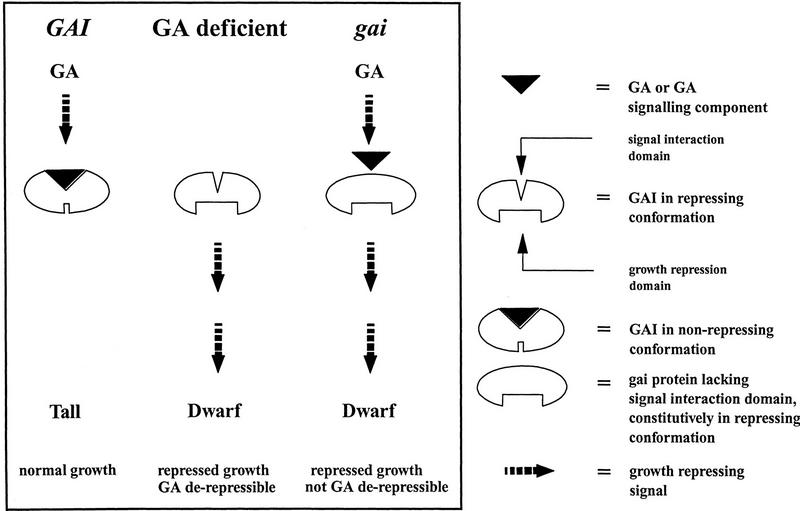Figure 6.
Derepression model for regulation of plant stem elongation by GA. GA derepresses stem elongation because it (or a GA signaling component) opposes the activity of GAI, a protein that represses stem elongation. GAI contains signal interaction and growth-repressing domains, and exists in one of two distinct conformations. Interaction between GA (or the GA signal) and GAI transforms GAI into the nonrepressing conformation. Normal plants (GAI) grow tall because the level of endogenous GA is sufficiently high to oppose the activity of the GAI repressor. GA-deficient plants contain insufficient GA to oppose GAI repression to the same degree and, therefore, are thus dwarfed. gai mutant plants are dwarfed because the mutant gai protein is relatively resistant to the effects of GA, and represses growth in a dominant fashion. Null alleles at GAI (eg., gai-t6) confer a tall, PAC-resistant phenotype, because absence of GAI results in loss of its growth repression function. gai-t6 mutant plants are not totally PAC resistant because of the probable activity of GRS. This model provides a general explanation for the regulation of plant stem elongation by GA.

